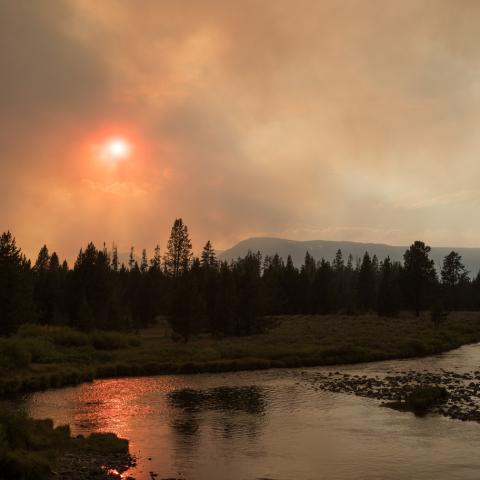
The lava lake at Hawai'i Volcanoes National Park has been an incredible attraction/NPS
Both Yellowstone National Park and Hawai'i Volcanoes National Park contain magma. The difference is that at Hawai'i Volcanoes, you can see the molten rock burbling in a lake.
At Hawai'i Volcanoes, officials say thousands of visitors are arriving daily to see a large lava lake that is steadily rising at the summit of KÄ«lauea volcano. Over the last several days, visitors waited up to 30 minutes or longer to park.
To ease traffic once the Jaggar Museum and KÄ«lauea Overlook parking lots fill up, rangers are currently redirecting vehicles during peak visitation hours to park at the KÄ«lauea Military Camp ball field. From there, visitors can hike one mile to the Jaggar Museum observation deck, the closest and best vantage point to view the spectacular lava lake.
"Visitors should come prepared to ensure a safe and enjoyable park experience," said Superintendent Cindy Orlando. "We encourage people to avoid peak hours, and arrive after 10 p.m. and before 4 a.m. if possible, or they will likely wait in line for parking. The park remains open 24 hours a day."
Tips for an optimal viewing experience:
* Be prepared to hike one mile each way between KÄ«lauea Military Camp ball field and the Jaggar Museum observation deck on Crater Rim Trail. Wear sturdy closed-toe shoes, bring rain gear, water, binoculars, a flashlight, and extra batteries.
* Carpool if possible to reduce the number of vehicles in the parking areas.
* As a courtesy to other visitors, no "tailgating" in the Jaggar Museum or KÄ«lauea Overlook parking lots. Choose another picnic location so others have a chance to view the eruption.
* To observe viewing and weather conditions, monitor the USGS Hawaiian Volcano Observatory webcams. The KI camera provides a panoramic view of Halema'uma'u Crater from HVO.
* High levels of dangerous sulfur dioxide (SO2) gas and volcanic ash can be blown over Jaggar Museum by southerly winds. These gases are a danger to everyone, particularly to people with heart or respiratory problems, young children and pregnant women. KÄ«lauea Visitor Center offers updates on air quality 24 hours a day, and visitors can monitor the Hawaii SO2 network website.
In addition, the public is reminded that park entrance fees apply and that the use of unmanned aircraft (drones) is prohibited in all national parks.




 Support Essential Coverage of Essential Places
Support Essential Coverage of Essential Places







Add comment